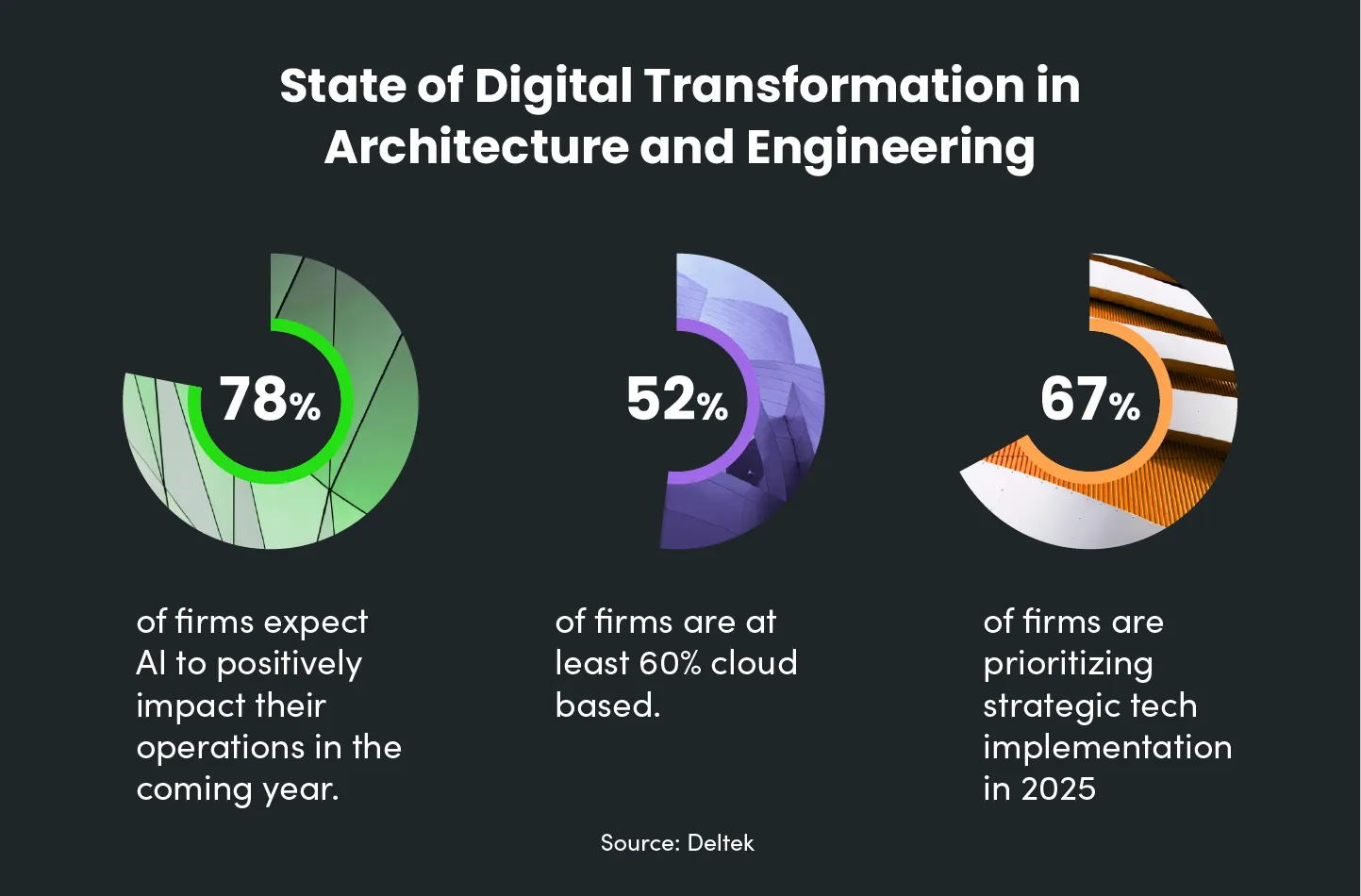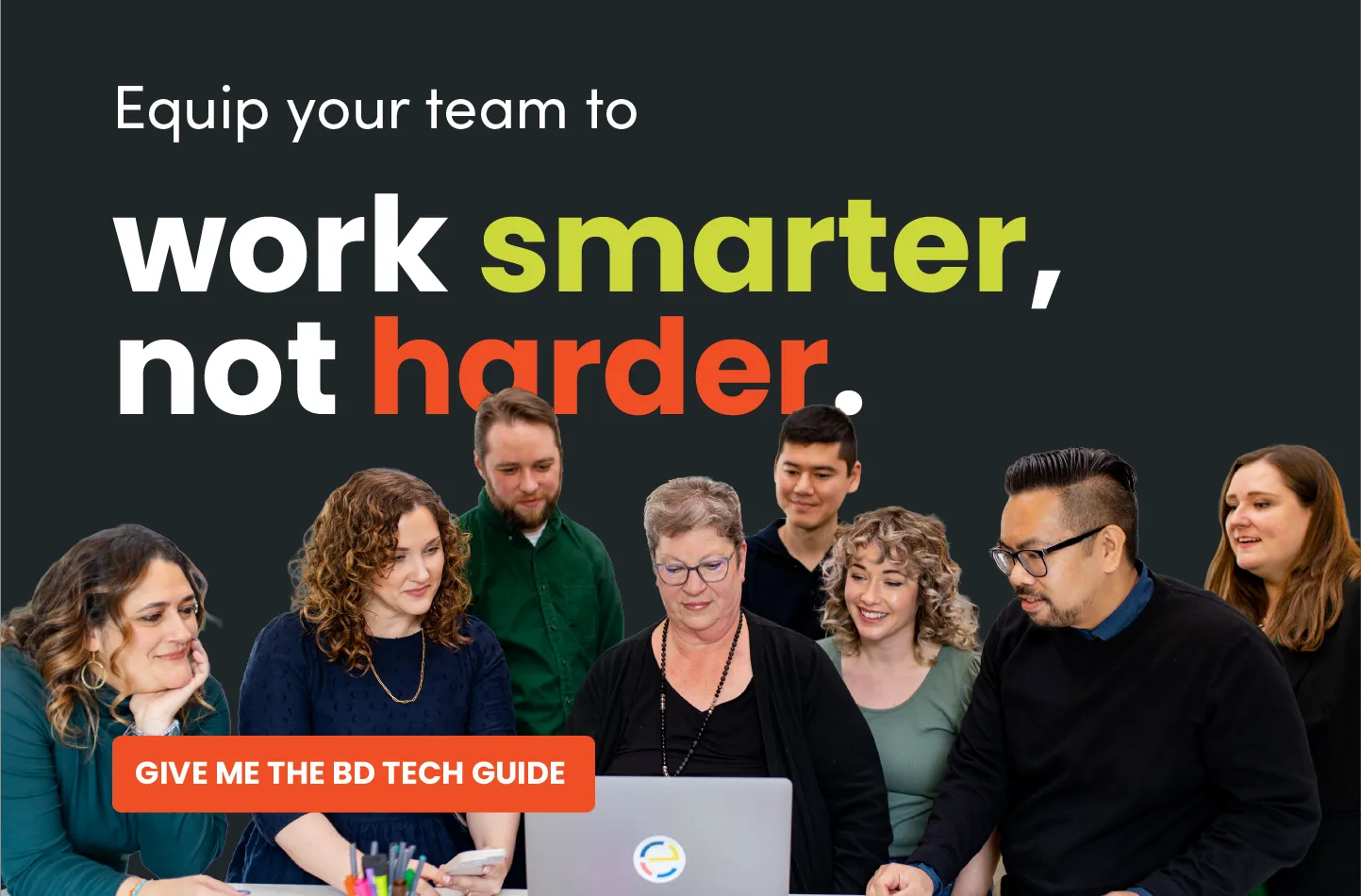Tech Stacks for A/E Firms: Where to Start
From platforms to features, integrations to updates, licensing to privacy — technology implementation can be a painstaking process for even the most adept firms. And because it is such a significant investment of time and resources, it can seem like the risk of getting it wrong outweighs the benefits of getting it right. And, that fear could be warranted. Failing to choose the right systems and setup can waste valuable resources and create more inefficiencies or frustrations within your processes. However, with the right strategy and clear evaluation criteria, you can cut through the noise, avoid costly missteps, and build a tech stack that actually supports your firm’s growth.
So, how do you ensure a return on your technology investment? Before diving into new platforms, you need a tactical approach.
Begin by identifying your primary pain points and key business objectives. Are valuable leads slipping through the cracks? Do you lack
visibility into your firm’s active pursuits? Are you spending too much time chasing low-probability projects? Gather input from your
marketing, business development, and project teams to gain a comprehensive understanding of the inefficiencies
inside your current practices.
Next, research the platforms that offer capabilities aligned with your specific needs and evaluate how they address these challenges. We know how time-consuming and overwhelming this part can be — that’s why we’ve done the research for you. Our BD Technology Comparison Guide highlights the leading solutions in the A/E industry, breaking down key features, integrations, and licensing details to help you make smarter, faster decisions. It’s a high-level resource designed to save you hours of preliminary research and point you toward the right-fit tools for your team.
Remember, you don’t have to tackle everything at once. Start small and prioritize the tools that address your most critical business development challenges first. But remember, it’s important to think about your future needs so that you don’t have to switch tools multiple times.










